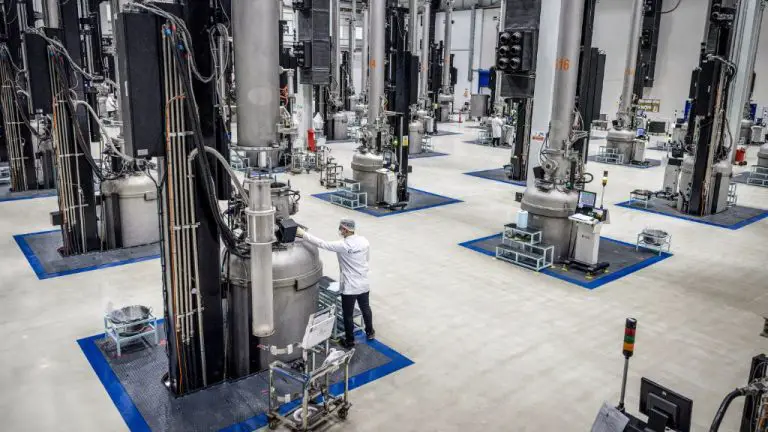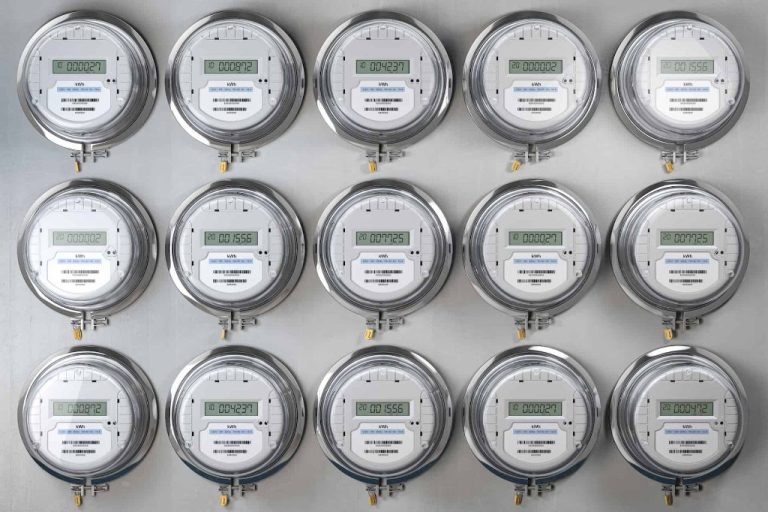How Do Schools Get Their Energy?
Schools use significant amounts of energy to power their facilities and provide comfortable learning environments. Energy is one of the top operating expenses for most school districts, accounting for 10-30% of their budgets. The main energy sources for schools include electricity, natural gas, heating oil, and some renewable energy.
Total energy costs vary widely between schools and districts based on factors like climate, building age and size, operations, and energy efficiency investments. On average, schools spend around $1.50 per square foot annually on energy. With the average public school encompassing around 127,000 square feet, that equates to nearly $200,000 spent on energy each year.
Improving energy efficiency provides an avenue for schools to reduce costs and free up funding for other priorities like supplies, salaries, and programs. Upgrading HVAC, lighting, windows, insulation, and installing renewable energy systems can help cut energy usage and overhead expenses. Schools are also turning to no-cost behavioral programs to engage students and staff in energy conservation.
Electricity
Most schools get their electricity from the electric grid, which transmits electricity from power plants to homes and buildings. According to Classroom Energy Flow, schools usually get electricity from a nearby power plant that generates it using various energy resources like coal, natural gas, nuclear, hydroelectric, wind or solar power (https://www3.uwsp.edu/cnr-ap/KEEP/Documents/Activities/School%20Building/ClassroomEnergyFlow.pdf).
Fossil fuels like coal and natural gas are commonly used to generate electricity in the U.S. They provide a steady supply of electricity at low cost but have downsides like air pollution and greenhouse gas emissions. Nuclear and hydroelectric plants provide emissions-free electricity but can be expensive to build and have environmental impacts. Renewables like wind and solar are clean sources but rely on weather conditions to generate electricity.
Some schools install solar panels to generate electricity on-site from the sun’s rays. This provides clean, renewable power and educational opportunities, but requires high upfront costs. It may meet only some of a school’s electricity needs unless storage batteries are added (https://www.linkedin.com/pulse/solar-energy-schools-guide-administrators-educators-getsolarlabs). Finding the right electricity mix requires weighing reliability, affordability and sustainability.
Natural Gas
Many schools use natural gas as an energy source for heating, hot water, and cooking. Natural gas is a cost-effective and cleaner burning alternative to other fossil fuels like oil and coal. According to MBS Engineering, natural gas accounts for 76% of space heating, 14% of water heating, and the remainder for cooking in schools.
Sourcing natural gas for schools involves setting up infrastructure to pipe it in from utility companies. MBS Engineering notes that more schools are turning to natural gas for budget and environmental reasons. An article from ACHR News explains how schools can cut costs using efficient natural gas technologies for electricity generation.
Overall, natural gas provides a reliable and lower emission energy source for schools to heat buildings, provide hot water, and power stoves for meal preparation.
Heating Oil
The use of heating oil is prevalent in many older school buildings across the country. According to Gotham Gazette, currently 232 New York City public schools rely on No. 6 heating oil for heat and hot water. This type of heavy heating oil produces high levels of soot and sulfur dioxide emissions, leading to poor air quality and negative health effects [1].
Heating oil is also costly, with volatile prices that can strain school budgets. The New York City Department of Education has plans to convert 198 schools from No. 6 heating oil to the marginally cleaner No. 4 oil by 2015 in an effort to reduce emissions and save money [1]. However, many argue this interim solution does not go far enough, and that schools should transition fully to cleaner heating systems like natural gas or geothermal energy.
Renewable Energy
Many schools are turning to renewable energy sources like solar, wind, and geothermal to meet some or all of their energy needs. According to the Institute for Local Self-Reliance, there are now over 7,300 K-12 schools using solar power nationwide, accounting for 5.5% of all public and private K-12 schools in the US (https://www.irecusa.org/our-work/solar-schools/). Solar energy is becoming especially popular, with nearly 1 in 10 schools using it as of early 2022 (https://www.nytimes.com/2022/09/15/climate/solar-energy-school-funding.html). Schools are turning to solar for cost savings and to meet sustainability goals. Many federal, state, and utility incentives are available to help schools finance solar projects.
Some schools are also using wind turbines and geothermal heating and cooling systems. Geothermal uses underground temperatures to provide heating, cooling, and hot water. While upfront costs can be high, geothermal systems can dramatically lower energy bills over time. Grants and incentives are sometimes available for geothermal and wind projects at schools.
Energy Efficiency
When it comes to reducing energy costs, energy efficiency improvements are often the most cost effective approach for schools. There are several key areas where schools can improve their energy efficiency.
LED Lighting
Replacing old fluorescent and incandescent lights with LEDs can significantly reduce lighting energy usage. LEDs use at least 75% less energy and last 25 times longer than incandescent lighting. The long lifespan also reduces maintenance costs. Many schools have been able to reduce their lighting energy usage by 50-70% by upgrading to LEDs.
Insulation
Adding insulation to attics, walls and pipes can substantially reduce heating and cooling costs. Insulation creates resistance to heat flow and helps keep warm or cool air in the building. Schools may be able to reduce heating and cooling costs by 25% or more through strategic insulation upgrades.
HVAC Upgrades
Upgrading heating, ventilation and air conditioning (HVAC) systems to more efficient models can also yield significant energy savings. Modern HVAC systems regulate temperature better and have built-in energy saving features. Regular maintenance and tuning of HVAC equipment also helps optimize energy performance.
The energy efficiency upgrades described above can yield substantial cost savings for schools. Efficiency projects often have short payback periods, resulting in positive cash flow for schools. Beyond cost savings, efficiency improvements also enhance learning environments for students and staff by optimizing lighting, temperature and air quality.
Behavior Change
Getting staff and students to actively participate in energy conservation is crucial for schools to reduce their energy usage and costs. Often the success of an energy efficiency program comes down to behavior change and creating a culture of conservation.
School administrators need to get teachers and staff invested in the program. One way to do this is to have teachers spearhead educational campaigns in their classrooms so students learn about energy usage and the importance of turning off lights, computers, etc. when not in use. Competitions between classrooms or grades can make saving energy fun. Clear signage around school also helps remind students of energy-saving behaviors (Source 1).
It’s also important to track and share results so students and teachers can see the impacts of their efforts. Celebrating energy savings milestones further motivates participation. Ultimately, conservation needs to become ingrained in the school’s culture so it persists beyond any one program. Sustained behavior change comes through continued education, reinforcement, and community engagement around energy efficiency.
Funding & Cost Savings
School districts face significant costs when it comes to energy usage. According to the U.S. Energy Information Administration (EIA), K-12 schools in America annually spend an average of $0.67 per square foot on electricity alone (https://www.costanalysts.com/average-school-electric-bill/). When including other energy sources like natural gas and fuel oil, U.S. school districts spend over $6 billion each year on energy, which is second only to salaries (https://www.xcelenergy.com/staticfiles/xe/Marketing/Managing-Energy-Costs-Schools.pdf).
To deal with these high costs, school districts must budget carefully for energy usage. This involves analyzing current spending, setting energy reduction goals, and allocating funds specifically for energy efficiency upgrades. Schools can also apply for grants and financing options to help cover the upfront costs of installing energy efficient technology. There are federal, state, and utility programs that provide grants, rebates, and low-interest loans for school energy projects. Identifying and leveraging these funding sources is key for schools looking to reduce energy costs.
Policies & Regulations
School buildings are subject to various policies and regulations related to energy use and efficiency. Many states and local governments have adopted building energy codes that set minimum requirements for energy performance in new school construction and renovations. For example, the International Energy Conservation Code (IECC) has been adopted statewide in over 35 states as of 2020 [1]. These codes establish baseline standards for building components like insulation, windows, lighting, and HVAC systems.
Many states and municipalities also require or encourage new schools to obtain green building certifications through programs like LEED or the Collaborative for High Performance Schools (CHPS). These programs set strict energy efficiency criteria, including standards around energy use intensity (EUI), renewable energy, commissioning, and more [2]. Federal policies like the Energy Policy Act of 2005 and the Energy Independence and Security Act of 2007 have also pushed energy efficiency investments in public buildings.
State and local governments play a central role in advancing energy goals in schools through funding initiatives, technical assistance, education campaigns, and more. For example, some states offer zero-interest loans, grants, or tax incentives for school districts to undertake energy upgrades. Others provide benchmarking tools and energy master planning support. Many have programs to educate students and teachers about conservation behaviors. Ultimately, strong partnerships between state and local leaders are critical for implementing comprehensive energy management strategies in the nation’s K-12 schools.
[1] https://www.energycodes.gov/adoption/states
[2] https://chps.net/dev/Drupal/node/288
Future Trends
As we look to the future, there are several innovations that may shape how schools source and manage their energy needs. One major trend is the continued growth of on-site renewable energy generation. More and more schools are installing solar panels, wind turbines, and other renewable systems to generate clean electricity right at the school. According to one source, over 5,500 K-12 schools in the U.S. have installed solar, and that number is expected to grow (https://www.seia.org/solar-schools).
Advances in energy storage technology, like batteries, will also open up more possibilities for schools to effectively capture and utilize the solar or wind energy they produce. Additionally, the electrification of heating systems and electric school buses is expected to accelerate in the coming years.
Experts predict schools will continue improving their energy efficiency through LED lighting retrofits, smart thermostats, upgraded insulation, and other measures. New technologies like artificial intelligence and machine learning may be applied to better analyze and optimize energy usage. Districts are also expected to expand investments in microgrid and islandable power systems to maintain resilient operations during outages.
In terms of policy, there are proposals to expand funding and incentives for schools to transition to 100% clean energy. Some states and districts have already set ambitious climate goals for their school systems. Overall, K-12 schools are poised to be leaders in the clean energy transition in the years ahead.






